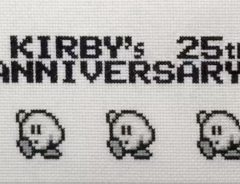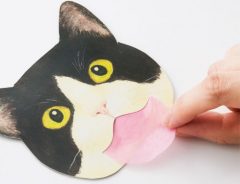Related Article
-

Japanese Fan Embroiders Incredible Stop Motion Animation Of The Kirby Dance For His 25th Anniversary
-

Pink Cat Tongue Oil Blotting Sheets Will Keep Your Face Oil-Free In The Cutest Way
-

Why is mochi one of the most dangerous foods that causes many deaths annually?
-

Adorable chibi-cigarette doll unites smokers and non-smokers with cuteness
-

Japanese Pet Goods Store Sends Flowers And Touching Message When Customer’s Cat Dies
-

Japanese Designers Stimulate Child Learning With Nameless Paint Sets



Furoshiki are traditional Japanese wrapping cloths made to carry clothes, gifts, and other goods. They began being used during the Nara period (AD 710-794) as a way to carry clothes to and from public bathhouses, but are now making a full comeback as eco-friendly, stylish, and extremely versatile cloths made in various fabrics and designs.
The furoshiki can be folded into a wide range of things, including grocery bags and protective hoods to wear during earthquakes. In fact, Japanese YouTuber Isao Yokoyama, also known as the Furoshiki Prince, has an entire YouTube channel dedicated to them, showing viewers different ways they can utilize the cloth.
In this video, he shows us how to wrap up our bento, or lunch boxes, in furoshiki. You can even fold it so that you’ll have a handle to carry it around with in your hand!
The steps are super simple.
First, place the bento in the middle of the cloth.
Source: YouTube
Then, tie all the opposite corners together. You’ll now have a typical wrapped bento.
Source: YouTube
Source: YouTube
For handles, tie single knots on two of the opposing corners of the cloth instead of tying them together in the middle.
Source: YouTube
Tie the knotted corners together.
Source: YouTube
Voila! You have your very own furoshiki bento wrap.
Source: YouTube
Yokoyama writes on his channel that his mission is to “wrap the whole world with furoshiki.” If you want, you can join him on that journey and check out more of his furoshiki videos. But until then, rest assured that you’ll at least be able to pack your lunches to-go in traditional Japanese style.
See the whole tutorial here: